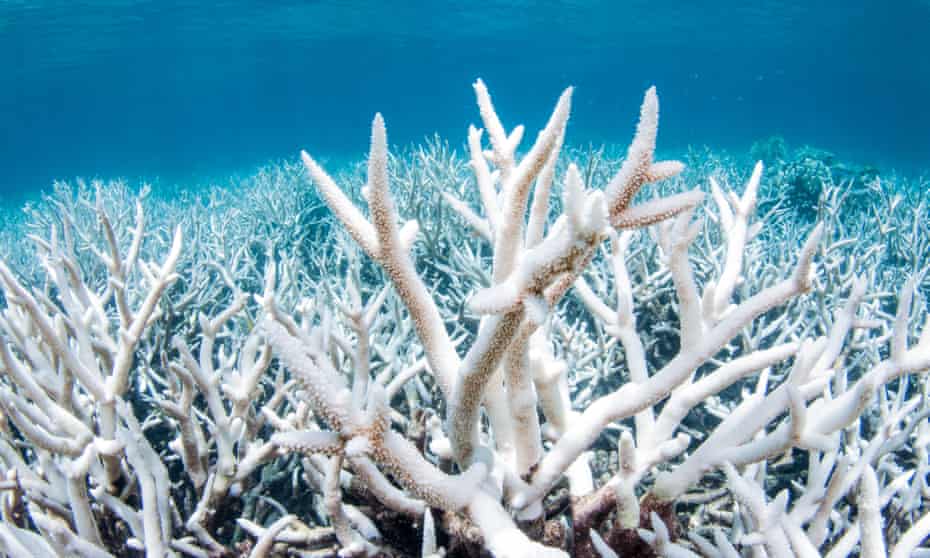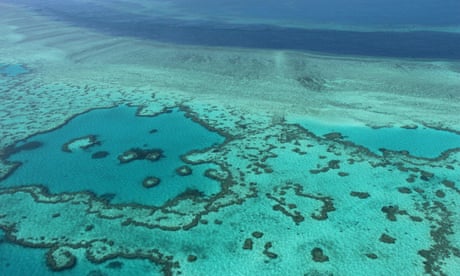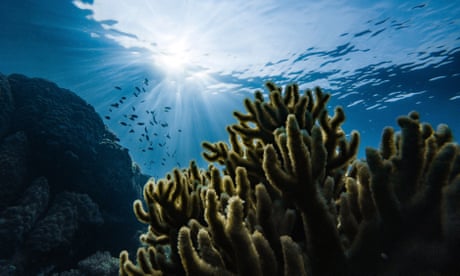Extract from The Guardian
Updated Reef 2050 plan comes after UN advisers recommended the reef be placed on the list of world heritage sites in danger.

The plan says the reef is under threat from marine heatwaves that caused three mass bleaching events in 2016, 2017 and 2020.
Last modified on Tue 21 Dec 2021 17.45 AEDT
The Morrison government has released an update to Australia’s cornerstone policy to protect the Great Barrier Reef as it tries to stop the ocean icon being placed on a list of world heritage sites in danger.
Environment groups said the updated Reef 2050 plan, released without fanfare late on Monday, fell short because it was linked to the government’s “inadequate” plan to cut greenhouse gas emissions.
A foreword to the plan, co-signed by the federal environment minister, Sussan Ley, and Queensland’s minister for the Great Barrier Reef, Meaghan Scanlon, said the reef is under threat from marine heatwaves that caused three mass bleaching events in 2016, 2017 and 2020.

The ministers wrote: “These events, combined with other major impacts to the reef, have affected the communities and industries that depend on it for their livelihoods and way of life.”
Scientists are concerned about forecasts showing large parts of the central and northern sections of the reef could bleach again by the end of January.
The ministers wrote that the updated plan, the first major revision in five years, “provides a pathway for accelerated action to conserve the Reef’s Outstanding Universal Value, and we are committed to investing the time, effort and resources required to implement it”.
Guardian Australia understands that committee has been asked to make further recommendations for action that could be added to the plan before next year’s world heritage meeting, scheduled for June in Russia.
UN science advisers said earlier this year the reef should be placed on the “in danger” list, but a world heritage meeting in July ignored that advice.
Instead, the committee said a UN “reactive monitoring mission” should be held to assess the reef and the updated plan. That mission is still not scheduled but is expected in the first half of 2022.
The committee raised concerns about the effects of mass coral bleaching events and said there was insufficient progress on cutting pollution levels in the reef’s waters – a key measure scientists say will give corals better resilience against rising ocean temperatures.
Australia has to report back to Unesco on the state of the reef and its plans before 1 February next year.
The world heritage committee is scheduled next July to decide if the reef should go on the “in danger” list – a prospect the Morrison government has lobbied hard to avoid.
Richard Leck, head of oceans at WWF Australia, said: “This new plan shows the Australian government is failing to do all it can to keep the future of the reef as safe as possible, especially from climate change.
The Morrison government has set a target to reach net zero greenhouse gas emissions by 2050, but its plan to get there using investments in technology has been roundly criticised.

According to the government’s own modelling, the technology-led plan will leave Australia about 226m tonnes short of net zero by 2050.
The government says it is on track to cut emissions by up to 35% by 2030, based on 2005 levels. But analysts say even if those cuts were achieved, it would not be in line with keeping global heating below 2C.
Leck said keeping global warming below 1.5C was crucial for the reef’s survival.
He said: “We know the pressure the tourism industry is under and we know how much Australians love the reef and how proud they are to be its custodians. But this plan risks the world heritage status of the reef.”
Leck said there was so far insufficient funding to meet targets to reduce pollution flowing into the reef’s waters from the land.
Simon Miller, a spokesperson for the Australian Marine Conservation Society, said: “The climate crisis is by far the biggest threat to our reef, so the lack of ambition detailed in the Reef 2050 Plan to tackle this issue is disgraceful.
“The current plan does little to address the root cause of global warming – burning fossil fuels, which heats the ocean and causes the coral bleaching events which have beset all but 2% of the global icon since 1998.”
Miller said the plan did make progress on tackling water pollution and illegal and unsustainable fishing, but those steps needed to “go further, faster”.
A spokesperson for Ley said: “Australia has always been confident that, following a reactive mission, the World Heritage Committee will be reassured about the international scientific leadership we are showing on the reef.”
The plan reflected “significant planning and scientific advice” and the government would work with Queensland and would “receive any advice on future enhancements to the plan, as has always been the case”.
Queensland’s Department of Environment and Science said in a statement the state government had “delivered much stronger protection for the reef – banning dredge spoil dumping, enacting new pollution regulations, land clearing laws and new net free zones.”
“However, the science is clear – the reef needs greater protection.”
The department said $2bn had been committed for cleaner energy, $500m for the Land Restoration Fund and $270m over five years for water quality protection in the reef catchment.
The statement added: “Both governments have also agreed to ask the reef advisory committee and the reef independent expert panel on additional ideas to prevent an in-danger listing, and to consider those ideas prior to the next meeting of the World Heritage Committee in June 2022.”
No comments:
Post a Comment